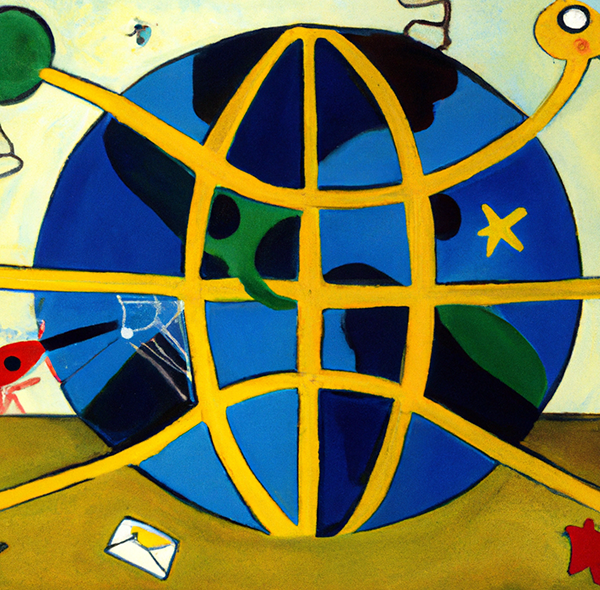
Kind of Blue
Today, when we hear the word “indigo” we immediately think of digital presses, but back in the Middle Ages, it was one of two ways of coloring something blue. For example, in the pre-Gutenberg era, when manuscripts were hand-copied, they were often “illuminated,” or festooned with illustrations, often in color, and one of those colors was blue. Indigo—a term which referred to the color as well as the dye itself—was one way of producing blue, but there was a second one: folium, which for centuries was a ubiquitous colorant. Folium was derived from the fruit of Chrozophora tinctoria, a small plant that grows in parts of Europe. However, the exact process for extracting folium from the plant had been lost, and recreating the blue dye has eluded modern science. That is, until the publication of a new study in the journal Science Advances.
Via Atlas Obscura, a team of Portuguese researchers set out to recreate folium.
The old practices had been documented, but were laborious and time-consuming. Melo’s team consulted an exhaustive list of instructions from the 15th century—literally, The book on how to make all the colour paints for illuminating books. But it isn’t exactly a modern cookbook. The manuscript was written in Judeao-Portugeuse, the extinct language used by the Jews of medieval Portugal. Besides translation matters, there’s more than one way to skin a cat, and other sources provided different instructions—and none of them provided a known name for the fruit behind the hue. Luckily, Melo’s source offered a lot of clues.
The team ventured into the southern, bleached-white town of Monsaraz to collect the fruit as per the manuscript’s instructions. The hairy plant’s fruit—about the size of a walnut—yielded a blue mixture. Careful not to crush the seeds, which the team realized jeopardized the quality of the ink, they identified the chemical compound that made the mixture, confirming folium’s identity on the molecular scale. It turns out folium is up with anthocyanins—the blue chemicals found in berries.
Although they’re academics, the project is not just academic—armed with the recipe for recreating folium can now be used by conservators preserving old manuscripts.
Seasonally Adjusting the Books
Do you like buying books? Do you like shopping at Costco? If so, bad news. Costco has announced that it will stop selling books year-round, putting them on sale only during the Christmas holiday season. Bummer. Says USA Today:
Costco's decision stems from the amount of labor required to stock books. Each title has to be unboxed and stacked by hand, whereas other products are simply rolled out on pallets. The company had already stopped selling books in its Hawaii and Alaska warehouses in 2022.
If there is an upside it’s that Costco really isn’t that big of a bookseller.
Publishers Weekly editor-at-large Jim Milliot estimates that the retailer along with other big-box stores like Target make up just 4% of book sales…
Still:
the shift is a symbolic blow to an industry that has already been struggling to keep up with rising operating costs.
We would unhesitatingly recommend one’s local Barnes & Noble or, better yet, independent bookstore.
Clay Court
We have occasionally, in this space, highlighted some unique and quite practical applications of 3D printing. As a manufacturing process, it is certainly coming into its own. And now, artists are seizing on the creative possibilities of 3D printing. Via Core 77, Polish artist Piotr Wasniowski works with “3D-printed clay” to create unusual textures. He calls his tool of choice the “Gaia Multitool Polish clay 3D printer with cheap de-airing clay extruder with rotational nozzle," and indeed an integral part of his process is fabricating his own nozzles, which are what allow his to create such a variety of unique textures.
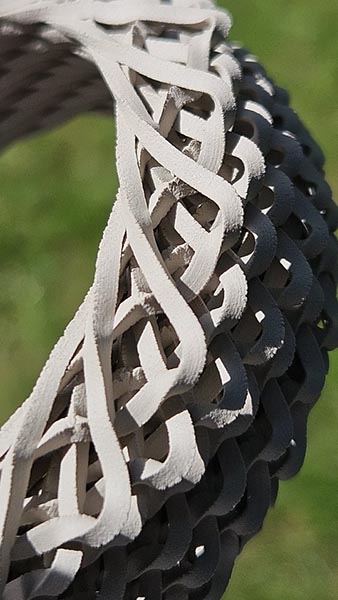
Check out more of his work on his Instagram page.
The King is Dead
Speaking of 3D printing, via Laughing Squid, Brooklyn sculptor Pygmallionaire has created a 3D-printed chess king that will collapse when checkmated. That is, the when a player loses the game, a sword—which reads “Fine. You win”—is extracted from the king and it collapses.
Pygmallionaire has also created a 3D-printed pawn that morphs into a queen when it reaches the opposite side of the board and gets promoted.
I designed a 3D printable pawn that turns into a queen. It gets a bigger base, grows in the middle and reveals its crown. This way you can dominate when you reach the other side.
“I Am Not a Typo…I’m a Human Being!”
Autocorrect. Easily one of the most irritating conveniences ever foisted on technology users. Maybe it’s us, but since the advent of autocorrect we have to proofread emails, texts, and other e-missives three times as thoroughly as we used to, lest we look back an email thread and cringe with embarrassment at what ended up being typed. (It had a great deal of fun with “drupa” which inevitably became “drupe” (a botanical term for stone fruit) although seeing it rendered as “drips” in one recent message was good spit take fodder.
That’s bad enough but, via The Guardian, there are people whose names are routinely autocorrected—and, like Howard Beale, they’re mad as hell and not going to take it anymore.
People with Irish, Indian and Welsh names are among those calling for improvements to the systems that operate on phones and computers as part of the “I am not a typo” campaign.
“It is important that technology becomes more inclusive,” said Savan-Chandni Gandecha, 34, a British Indian content creator whose name, which means monsoon moonlight, has been autocorrected to Satan.
“My name has also been corrected to Savant,” they said. “It is sometimes corrected to Savan, or the hyphen is not accepted by online forms and that irks me.
And it’s not just English. Other languages’ autocorrects also screw up names.
The campaign has estimated that four out of 10 names of babies born in England and Wales in 2021 were deemed “wrong” or “not accepted” when tested on Microsoft’s English dictionary.
Dhruti Shah, a journalist, has backed the campaign after seeing her name autocorrected to “Dirty” and “Dorito”.
We wonder at what point autocorrect failures will serve as the basis for nicknames, assuming they haven’t already.
At any rate, folks are calling on technology companies to fix the problem.
Karen Fox, whose children are called Eoin and Niamh, said of autocorrect: “The red line bothers me – I didn’t choose the ‘wrong’ name for my child. Tech companies update dictionaries with slang all the time and I think it should be an easy thing to do and definitely a priority.”
Or we could get rid of autocorrect entirely.
Tale of the Tape
Duct tape. An indispensable item to have in any home. It can repair virtually anything, although we have in fact been witness to professional plumbers bursting out laughing at ersatz duct tape repair jobs. But still…even NASA astronauts have used duct tape to repair spacecraft.
Via Boing Boing, a fascinating video on the development and chemistry of the wonder material (sorry, graphene). Despite its name (and it’s duct not duck), it was not, as one would have thought, invented to repair or connect or otherwise do something involving ducts. Rather, it was invented during the Second World War to quickly repair ammunition boxes.
Watch as Engineer Guy places a strip of duct tape in a solvent, breaking it down into its three key elements: the plastic backing, the cloth reinforcement, and the pressure-sensitive adhesive. The cloth provides strength and tear resistance, while the adhesive enables the tape to stick to surfaces, hold objects together, and be removed without leaving a sticky mess behind.
Let’s go to the tape…
Silence Is, if Not Golden, at Least Black (& Decker)
There are some inventions for which we feel that a Nobel Prize is more than warranted. In this case, via Core 77, is a leaf blower silencer. It started as a seemingly impossible assignment in a Johns Hopkins Mechanical Engineering class: design a silencer for an off-the-shelf leaf blower, without reducing its efficacy.
Apparently the assignment was given with no expectation that it could actually be accomplished; as the school's Hub publication writes, “Shocking their sponsors, their advisers, and even themselves a little, the students did it.”
And a nation turns its busted eardrums to them.
Seniors Leean Alfaoury, Michael Chacon, Madison Morrison and Andrew Palacio have been working on it since last September. The team analyzed the variety of noises that come out of a leaf blower—“it contains a lot of different frequencies,” Palacio says—and finally focused on “the most shrill and annoying frequencies,” reducing those by a staggering 94%.
The silencer ultimately yielded an overall noise reduction of 37%—which may not, er, sound like a lot, but the presents a before and after:
In even happier news for these brilliant students, Stanley Black & Decker is putting it into production.
“It’s not just some cool theoretical thing that will sit on a shelf and never be heard from again—this is ready to be mass manufactured,” says Nate Greene, senior product manager at Stanley Black & Decker and Johns Hopkins engineering alum. “This is a really rare and dramatic level of success.”
The students say the idea can be adapted to other noise-generating appliances like hair dryers and vacuum cleaners.
Let’s hope the Nobel committee is also paying attention.
Graphene in the Paint
Was it a good week for graphene news? It’s always a good week for graphene news! graphene-enhanced anti-corrosion additive for solvent-based paints. From (who else?) Graphene-Info:
Gerdau Graphene has announced the availability of NanoCORR Shield, the newest product from its G2D NanoCORR line of anti-corrosion paints and coatings additives. Developed with Gerdau Graphene's exclusive G2D technology, NanoCORR Shield is a graphene-enhanced chemical additive designed to increase the corrosion resistance of solvent-based paints and coatings. NanoCORR Shield has demonstrated a 30-70% increase in corrosion resistance when subjected to salt spray testing.
The specially-developed graphene, when added to paints and coatings, increases the barrier against water, oxygen, and chlorides. It also reduces paint consumption as it requires a thinner coat to be as effective as other paints and coatings.
Good Days and MAD
Those of us of a certain generation have fond memories of one of the staples of our childhoods—MAD Magazine. First published in 1952, it was the pre-eminent humor magazine from the 1950s through the 1980s (although it still exists and is now published by DC Comics). The “classic era”—when we encountered it—was 1965–1980, when it had perfected its formula for creating sophisticated satire alongside sophomoric humor. Mort Drucker, Don Martin (“sklorrrrp!”), Sergio Aragonés, Dick DeBartolo, Al Jaffee—these were all household names in some of our households.
We bring this up because, via Print magazine, the Norman Rockwell Museum in Stockbridge, Mass., has just opened a new exhibition called What, Me Worry? The Art and Humor of MAD Magazine. We are going to have to make a pilgrimage to Stockbridge, Mass.
The show covers the full legacy of MAD, from Harvey Kurtzman’s inspired comic book, to Bill Gaines’ outwitting the Comics Code Authority by transitioning from comic book to magazine format, up through the present. The NRM curatorial staff, headed by Stephanie Plunkett, together with guest curator Steve Brodner (assisted by an unusual gang of experts), has brought MAD—which ended newsstand distribution in 2018, continuing in comic book stores and via subscription—back to the fore with a richly filled treasury of printed and original material.
Print’s Steven Heller spoke with the curators.
We began by working with award-winning satirical illustrator Steve Brodner and a group of 10 advisors, including MAD art directors, artists and writers, and an academic specialist in American Humor Studies, who gave us a more complete understanding of the topic and the important touchpoints to explore. They also helped to connect us to a wide range of artists from across MAD’s history, and we were grateful for their assistance. From there, we established both a MAD timeline through the publication’s editorial periods as well as some major themes that remained prominent through the years. We began reaching out to both MAD collectors and to individual artist to request loans of art and objects for display. Lenders have been extremely enthusiastic about the exhibition and they are passionate advocates for the publication and its contributors.
The exhibition runs through October 27.
Code Metal
In the 1970s, when the UPC code became de rigueur for virtually every product, MAD Magazine would routinely parody their own.
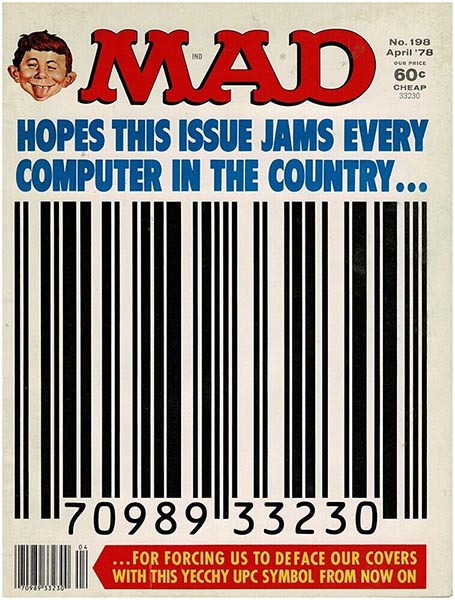
In a somewhat similar vein, via Laughing Squid, Small Town Titans, a heavy metal band from York, Penn., has launched a “Will It Riff?” video series in which they convert UPC codes into guitar tabs and thus kick-ass guitar riffs. This is awesome. They do Heinz:
Starbucks:
Oreos:
And Frosted Flakes:
Among others! You’ll find yourself humming the oddest things...
Bee-r Me
Do you like beer? Do you also like killer bees? If so…well, that’s just weird. But anyway, via Gizmodo, microbiologists in the UK have brewed a beer using yeast obtained from the guts of killer bees. Why? you may ask. Well…
The bee beer was brewed by researchers from Cardiff University. They were visiting Namibia, located in southwest Africa, as a part of a research project when they became interested in the country’s killer bees. On a whim, they decided to collect samples of Saccharomyces cerevisiae—a fungal species that has long been used to help produce beer, wine, and baked goods—from the gut microbiome of killer bees that had died naturally. The fungus is more commonly known as brewer’s yeast.
It’s actually part of a larger project.
The Cardiff team’s brew is a spinoff of their larger Pharmabees project, which is trying to explore whether the pollination of certain plants can lead to the development of drugs able to target antibiotic-resistant bacteria, or superbugs. As part of that project, researchers have transported and placed hives around the university—hives that they hope can yield super-honey with novel antibacterial properties.
Back to the beer… No word on whether it’s any good or what kind of, er, sting, it might have, but apparently the researchers like it.
The buzzy beer isn’t specifically part of that goal, but the team is now looking for a brew partner that can help them bring it to the market. From there, any proceeds would go toward funding their bee-related research.
Hey, it’s got to be better than PBR.
Smoothie Operator
Here’s a term we had never heard before: smoothie keg. Says Food & Wine:
Say goodbye to the painstakingly hollowed-out watermelon keg, spirit-soaked pineapple slices and alcoholic ice pops that never quite freeze correctly.
We’re not sure we ever said hello to any of these things, but, OK, premise granted. Continue…
Smoothie King is offering up an innovative new way to slurp up some spiked smoothies. Introducing: The Smoothie Keg, a DIY innovation that brings the party to your home. This limited-edition keg, created exclusively for Smoothie King, allows you to create a batched cocktail with the ease of blending fruits, organic vegetables, and your choice of spirits. It's the ultimate convenience for your summer gatherings.

Starting June 12, The Smoothie Keg will be given away for free as a special gift with the purchase of a Smoothie Six-Pack, while supplies last. This exclusive offer is only available at select locations, chosen for their summer party scene notoriety: Brooklyn, New Orleans, Las Vegas, and more.
Ten cities in all—hmm...“intensities in 10 cities”?
Making frozen cocktails without a blender can truly be a luxury. All six smoothies can be dumped into the Smoothie Keg, mixed with alcohol, and dispensed for outdoor drinking for all to enjoy.
This Week in Printing, Publishing, and Media History
June 10
1793: The Jardin des Plantes museum opens in Paris. A year later, it becomes the first public zoo.
June 11
1572: English poet, playwright, and critic Ben Jonson born.
1892: The Limelight Department, one of the world’s first film studios, is officially established in Melbourne, Australia.
1910: French biologist, author, inventor, and co-developer of the aqua-lung Jacques Cousteau born.
1935: Edwin Armstrong gives the first public demonstration of FM broadcasting in the United States.
1936: The London International Surrealist Exhibition opens.
1998: Compaq Computer pays US$9 billion for Digital Equipment Corporation in the largest high-tech acquisition.
2002: Antonio Meucci is acknowledged as the first inventor of the telephone by the United States Congress.
June 12
1817: The earliest form of bicycle, the dandy horse, is driven by Karl von Drais.
1916: American director and producer Irwin Allen born.
1920: American cartoonist Dave Berg born.
1939: Shooting begins on Paramount Pictures’ Dr. Cyclops, the first horror film photographed in three-strip Technicolor.
1939: The Baseball Hall of Fame opens in Cooperstown, N.Y.
1949: English singer-songwriter, bass player, and producer John Wetton born.
1959: American singer-songwriter and musician John Linnell born.
1985: American computer programmer and co-creator of Mozilla Firefox Blake Ross born.
June 13
1865: Irish poet and playwright W. B. Yeats born.
1971: The New York Times begins publication of The Pentagon Papers.
1983: Pioneer 10 becomes the first man-made object to leave the central Solar System when it passes beyond the orbit of Neptune.
June 14
1618: Joris Veseler prints the first Dutch newspaper Courante uyt Italien, Duytslandt, &c. in Amsterdam (approximate date).
1822: Charles Babbage proposes a difference engine in a paper to the Royal Astronomical Society.
1933: Polish-American novelist and screenwriter Jerzy Kosi?ski born.
1936: English essayist, poet, playwright, and novelist G. K. Chesterton dies (b. 1874).
1951: UNIVAC I is dedicated by the U.S. Census Bureau.
1966: The Vatican announces the abolition of the Index Librorum Prohibitorum (“index of prohibited books”), which was originally instituted in 1557.
June 15
1752: Benjamin Franklin proves that lightning is electricity.
1878: To settle a bet, Eadweard Muybridge takes a series of photographs to prove that all four of a horse’s hooves leave the ground when it runs. The results become the basis of motion pictures.
June 16
1903: The Ford Motor Company is incorporated.
1904: Irish author James Joyce begins a relationship with Nora Barnacle and subsequently uses the date to set the actions for his novel Ulysses; this date is now traditionally celebrated as “Bloomsday.”
1911: IBM is founded as the Computing-Tabulating-Recording Company in Endicott, N.Y.
1917: American publisher Katharine Graham born.




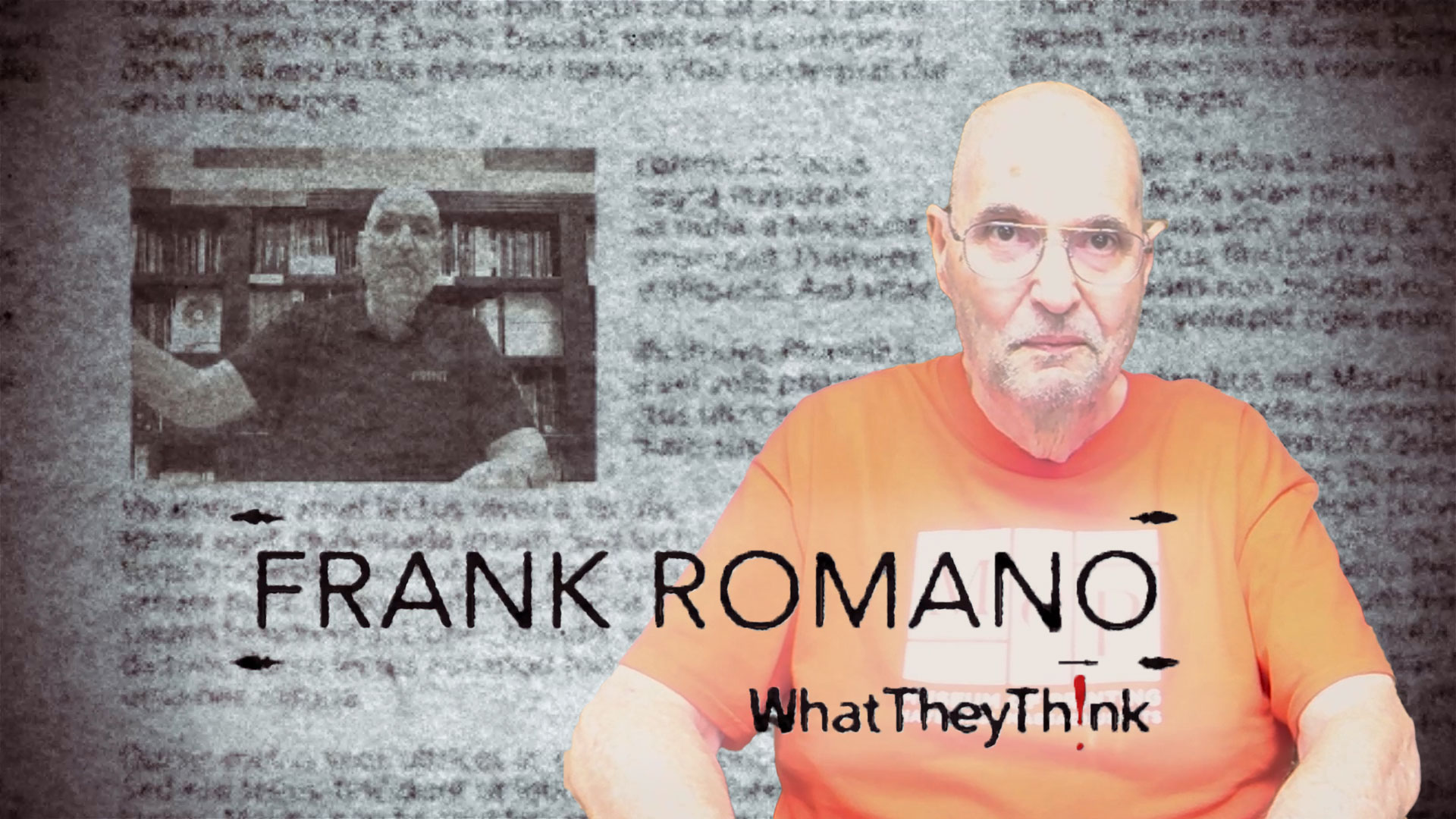






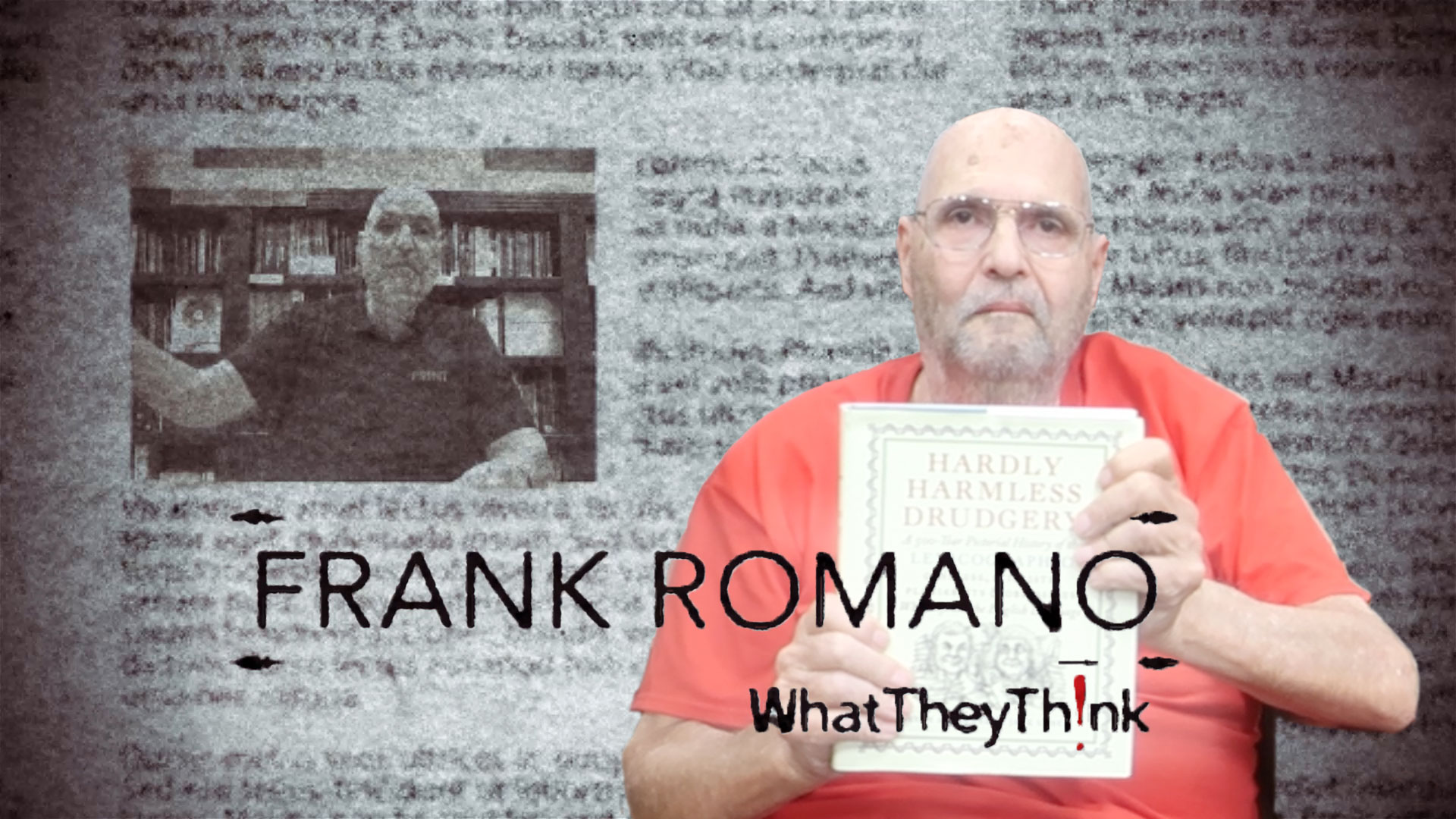



Discussion
Only verified members can comment.